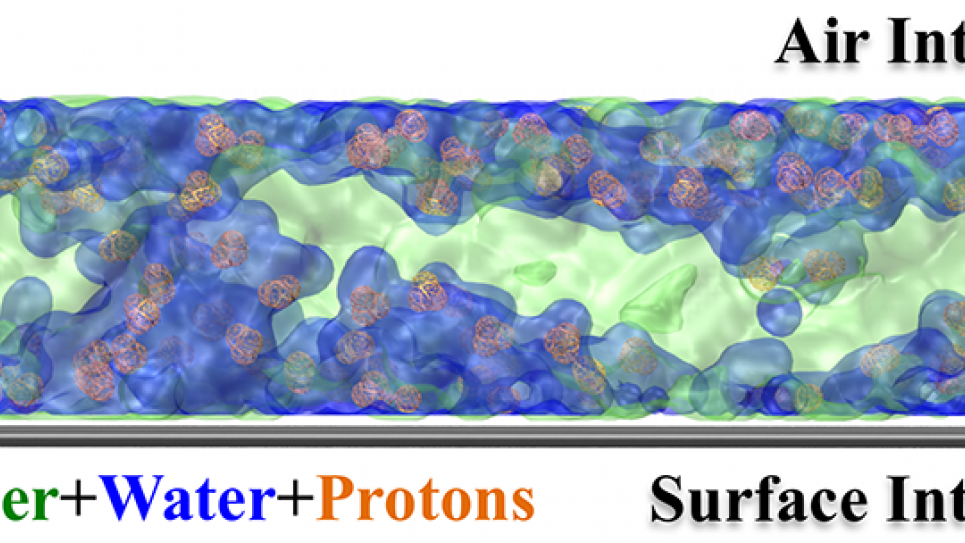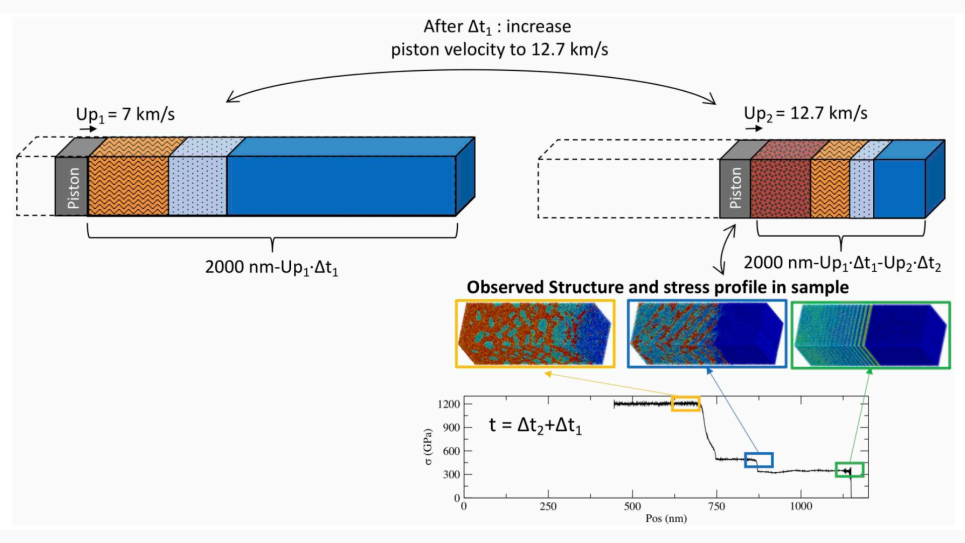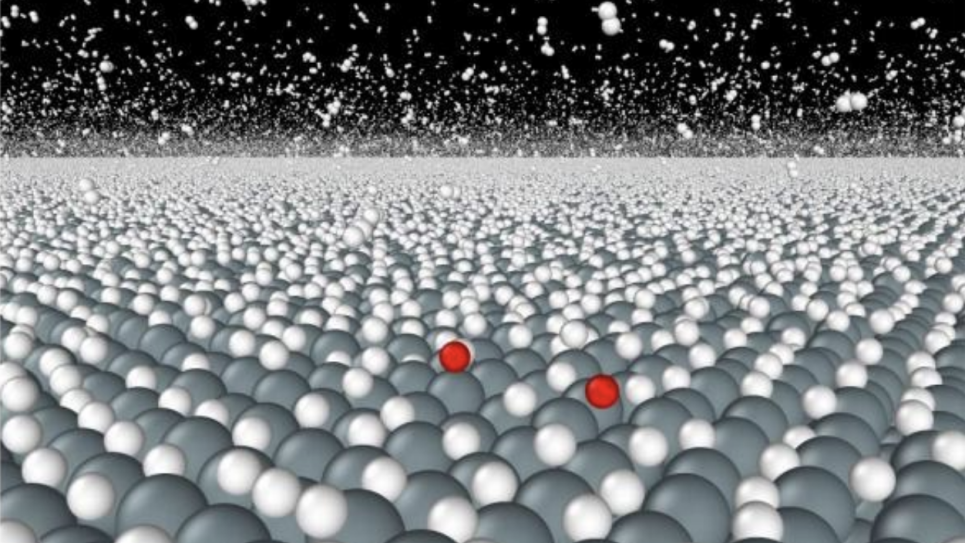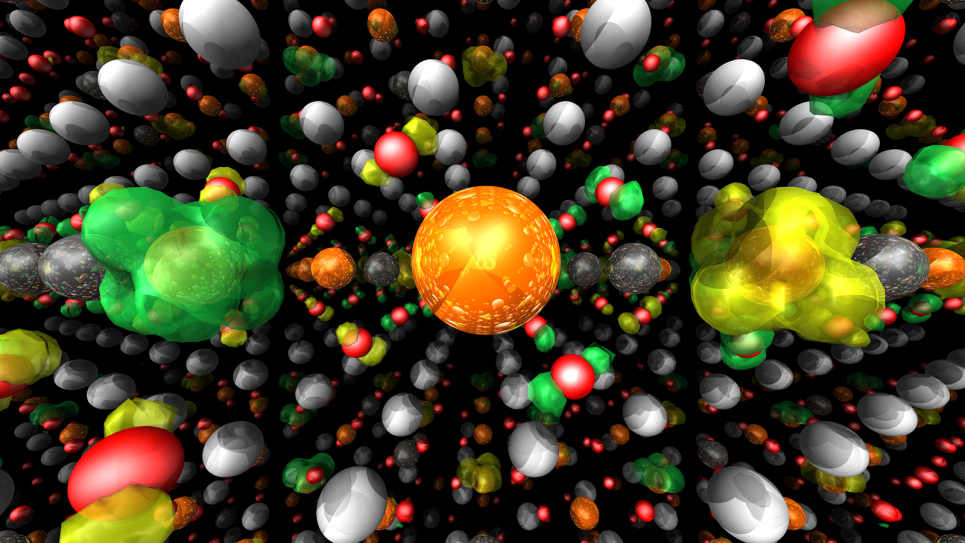
Charge Transport in Thin Film Ionomers
One of the grand challenges for green energy (e.g., from solar and wind sources) is creating storage for excess electricity that can be inserted later into the power grid. Electrochemical energy-conversion devices, such as fuel cells, could, in theory, provide continuous power to a wide range of portable, residential, and transportation devices. But performance depends on fuel cell catalyst layers which, problematically, are a potential bottleneck for proton transport. This project extends the understanding of fundamental proton transport processes in thin film ionomers, which are critical components in electrochemical conversion devices.
Large-scale, reactive molecular dynamics (MD) simulations will be used to compute key physical properties relating to proton transport and solvation within thin film membranes and, most importantly, will account for the correlated motion of many excess protons. Researchers have teamed Mira with LAMMPS, an open-source molecular simulation code from Sandia National Laboratory, and their own reactive MD simulation code, RAPTOR, which incorporates accurate molecular interactions, chemical reactivity, and robust parallelization algorithms to enable sampling of required spatial and temporal scales.
The largest to date, these multistate simulations will enable detailed analysis of proton-membrane and proton-proton correlations within the membrane environment as a function of morphology, and comparison with ongoing experiments.
The successful development of low-cost, durable, multi-purpose electrochemical devices, such as high-performance fuel cells, demands collaborative science of an unparalleled nature. Working with the Functional Polymers Group at the National Institute of Standards and Technology (NIST), with its ability to perform a huge array of experimental measurements on systems studied through this project, will make this possible.


